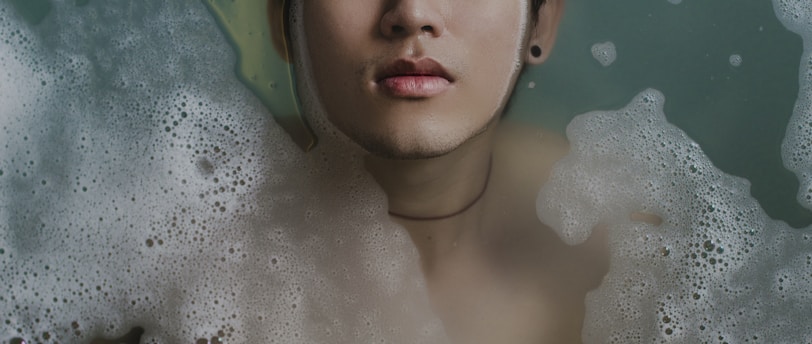Same Great Service - Fresh New Name
9 Proven Tips for Effortless Hot Tub Maintenance and Enjoyment
Simplifying hot tub maintenance. It likely provides practical tips and tricks to keep your hot tub clean, running smoothly, and ready to enjoy with minimal effort.
HOT TUB MAINTENANCEHOT TUB TIPS & TRICKS
The Hot Tub Guy
1/22/20255 min read


Establish a Routine for Water Care
Maintaining optimal water quality in a hot tub is essential for ensuring a safe and enjoyable soaking experience. Establishing a routine for water care helps in preventing potential issues such as algae growth, cloudy water, and irritating water conditions. To achieve this, it is recommended to test the water regularly—preferably at least two to three times a week. This frequency allows you to stay ahead of any fluctuations in water chemistry that could impact your hot tub experience.
Testing the water involves checking key parameters such as pH levels, alkalinity, and sanitizer concentration. The ideal pH level for hot tubs typically ranges from 7.2 to 7.8. Maintaining this range is crucial, as levels that are too low can cause skin irritation, while excessively high levels can lead to scale buildup and cloudy water. Alkalinity is another important aspect, serving as a buffer for pH fluctuations. The recommended alkalinity range is between 80 and 120 ppm (parts per million).
To effectively manage these parameters, utilizing test strips or kits is advisable. Test strips provide a quick and convenient method for gauging water quality. Simply dip a strip into the water and compare the results to the provided color chart for instant readings. For more precise measurements, a liquid test kit can be used, albeit requiring a bit more time and effort. After assessing the water quality, it is essential to adjust the pH and alkalinity levels accordingly. If the pH is too low, using a pH increaser or alkali product can help; conversely, a pH decreaser will help if levels are too high.
In summary, establishing a set routine for testing and adjusting your hot tub water not only enhances the enjoyment of your soaking experience but significantly contributes to the longevity of your hot tub equipment. Regular maintenance routines will ultimately ensure a healthier and more inviting hot tub environment.
Regular Filter Maintenance
The hot tub filter plays a vital role in ensuring the water remains clean and clear, making regular maintenance essential for optimal performance. To maintain a healthy filtration system, it is recommended to clean the filter every two to four weeks, depending on usage. Properly executed cleaning routines help remove debris, hair, and other contaminants that can accumulate over time, compromising water quality.
To effectively clean the filter, first, turn off the hot tub and carefully remove the filter cartridge. Rinse it with a garden hose, ensuring to dislodge any trapped particles. For a more thorough cleaning, consider soaking the filter in a filter cleaner solution for a few hours before rinsing it again. This technique not only cleans but also revitalizes the filter, allowing it to function more efficiently.
A key indicator that it’s time to replace your hot tub filter is a noticeable decrease in water flow or pressure. Other signs include a dirty or damaged filter element and an inability to adequately clean the water. Generally, hot tub filters should be replaced every one to two years, but this can vary depending on usage, water quality, and the type of filter used.
Properly installing the new filter is crucial to ensure it operates effectively. Begin by turning off the hot tub, removing the old filter, and cleaning the filter housing. Insert the new filter, ensuring it is seated correctly without any gaps. Secure the filter cap and restore power to the hot tub, checking for any leaks or obstructions.
Maintaining a well-functioning filter significantly enhances the overall hot tub experience. Clean and efficient water filtration not only contributes to the clarity of the water but also reduces the need for additional chemical treatments, ensuring a more enjoyable and relaxing soak. Regular attention to filter maintenance ultimately leads to a healthier and more satisfying hot tub environment.
Keep the Hot Tub Covered When Not in Use
Covering your hot tub when it is not in use is one of the most effective strategies to minimize maintenance efforts while maximizing energy efficiency. A good-quality hot tub cover serves multiple purposes, including temperature retention, debris prevention, and the preservation of chemical levels within the water.
One of the primary benefits of a hot tub cover is its ability to retain heat. When hot water is exposed to outdoor temperatures, it can lose heat rapidly. A well-insulated cover acts as a barrier, helping to maintain the desired temperature of the water. This not only ensures that your hot tub is always ready for use but also reduces energy consumption, resulting in savings on your utility bill.
In addition to heat retention, a cover plays a crucial role in keeping debris out of the hot tub. Leaves, dirt, and other contaminants can accumulate in an uncovered tub, resulting in increased cleaning and chemical balancing efforts. By using a cover, you can significantly reduce the amount of debris that enters the water, thus minimizing the frequency of water changes and maintaining overall water quality.
Furthermore, chemical preservation is another reason to utilize a hot tub cover. When the hot tub is uncovered, the chemicals used for maintaining water clarity and sanitation can evaporate more quickly. A cover not only helps to keep these chemicals in the water longer but also reduces the likelihood of needing to add more chemicals frequently.
When selecting a cover, consider factors such as material, thickness, and insulation properties. A high-quality cover will provide better insulation and durability, ensuring that it lasts longer and performs more effectively. Additionally, regular maintenance of the cover, such as cleaning and conditioning, will help to prolong its lifespan and maintain its protective benefits.
Monitor and Maintain the Hot Tub Environment
Maintaining a clean and secure environment around your hot tub is crucial for maximizing enjoyment and ensuring safety. The landscape surrounding your hot tub should be kept tidy, as overgrown plants or unkempt gardens can not only detract from the aesthetic appeal but also pose safety hazards. Regular landscaping can help prevent plant debris, such as leaves and branches, from falling into the hot tub and affecting water quality.
Additionally, debris build-up may lead to blockages in the filtration system, which can compromise the efficacy of your hot tub. It is advisable to perform frequent checks around the hot tub area to remove any fallen leaves, dirt, or other miscellaneous items that may accumulate. Incorporating a routine cleaning regimen that includes sweeping the surrounding area will contribute significantly to maintaining a fresh environment.
Safety should be a priority when it comes to hot tub usage. Installing non-slip surfaces around the tub can help mitigate the risk of accidents caused by wet floors. These surfaces can include textured mats or special slip-resistant tiles designed to provide additional grip during entry and exit. Apart from flooring, adequate lighting is essential for a safe environment, particularly during evening use. Opt for well-placed outdoor lighting or waterproof string lights to illuminate the area, making it easier to navigate around the hot tub.
The overall environment significantly impacts the enjoyment of hot tubbing. A well-maintained outdoor setting not only enhances relaxation but also creates a welcoming atmosphere for social gatherings. By addressing cleanliness, safety measures, and the surrounding landscape, hot tub owners can ensure optimal enjoyment. Creating a comfortable and secure environment allows users to focus on the ultimate relaxation experience provided by their hot tub.
The Hot Tub Guy
Get expert hot tub sales and service delivered with integrity.
Service
Hot Tub Information & Updates
Service@HotTubGuy.pro
803-627-8225
© 2024. Powered by Tefans Tactics
Sales
803-627-8225
Sales@HotTubGuy.pro


